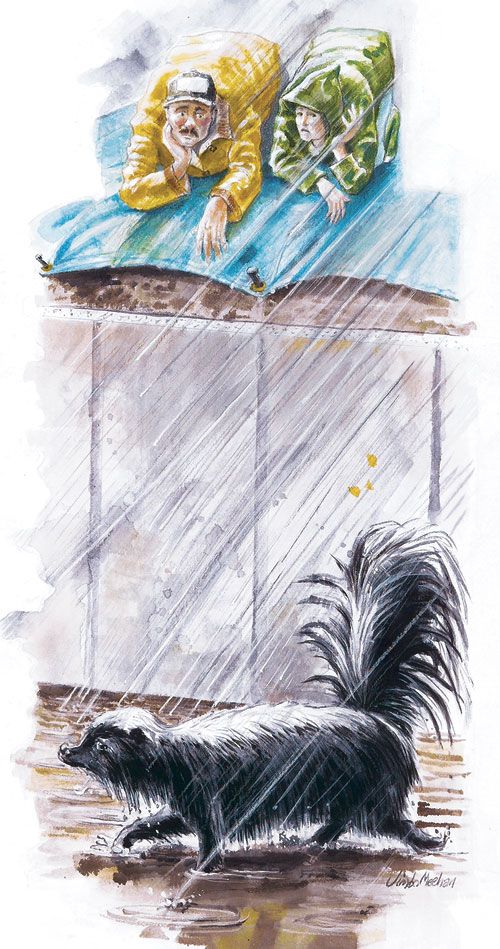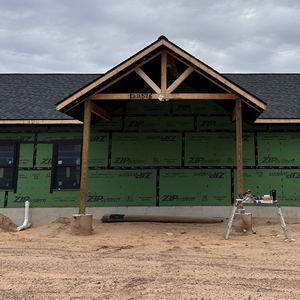Heaven Scent
Great moments in building history: Oddly enough, it wasn't the heavy storm that was the problem...

A couple of years back, my part of Northern California had a dry, warm fall; then the weather decided to play catch-up in two days. Pouring rain and howling winds ripped out electricity to thousands of homes and businesses for a vast section of the state. Trees crashed on roads, houses and cars. Storm clouds building the night before had given some indication of trouble, and better safe than sorry, I covered my jobs with tarps and hoped they held through the storm.
The storms battered my house and the neighborhood all night, and our house was without electricity from the start of the storm. We were lucky, though: Our power returned the next day, but some folks did without for a week. I live in the wooded Oakland hills where many of my jobs are, and early in the morning, I drove off to check the job that was most at risk.
The project was a garage built into a steep hillside. The back wall was an engineered 81⁄2-ft. tall by 16-ft. long retaining wall. Luckily, we had poured the concrete a few days before, and I felt secure in its ability to stand the storm. But the excavated dirt was still piled up behind the wall, and if the tarps didn’t hold, the absorbent clay soil would become saturated and too heavy to stay put on the steep hillside. The soil might have slid back into the 7-ft. deep hole between the new wall and the dirt embankment before we had a chance to install the drainage system. We would have had to dig out mud for days. At the site, everything was fine, the tarps were secure, and the hill was dry and holding, even though the rain was pouring down.
Then the homeowner, Renee, came out and said, “Hi Mike. Everything looks okay. But we do have a slight problem.” I couldn’t see anything wrong until Renee walked me up the hill and pointed down to the bottom of the trench.
At the bottom, up to its belly in muddy water, fur bedraggled, rain splashing in its eyes as it looked up, was the biggest and unhappiest skunk I’d ever seen. It didn’t look bothered by our staring down—trusting and expectant was more like it.
Renee called the animal-control officer, only to be confronted with the usual twisted logic of a city bureaucracy. “I’m sorry,” the voice on the phone said, “but we do not deal with live animals anymore—we simply don’t have the funds. We don’t recommend that you try to rescue it, either, lest you be injured in the process. Leave the animal alone, and should it meet an unfortunate fate, call us and we will come out and retrieve the carcass.” At least Renee and I were on the same wavelength, so we proceeded to think of a way to rescue the hapless critter.
Renee suggested sliding a board into the trench to create a ramp. We used a 12-ft. long 2×6, which made a rather steep, narrow walkway. After much coaxing and many attempts by the determined skunk, it could manage to get up only about a third of the way before slipping back into the muddy water. Skunks aren’t made for climbing, so it had a tough time gripping the slippery, wet board.
I thought it would be helpful if the skunk had something to grab onto, so I pulled the board out and nailed little chamfer strips of wood left over from the concrete pour. I nailed the strips about every 5 in. along the length of the board and slid the makeshift staircase back into the trench.
The skunk retreated to the far end of the trench. So I talked to it, coaxing until it warily set one foot on the end, decided it liked it, set another foot after it and slowly gained speed up the plank. Finally, having reached the top, the skunk waddled off into the woods. And luckily for us, it left no odoriferous reward for our rainy-day rescue.
—Michael Lonsdale, Oakland, California
Drawing by: Jim Meehan
Fine Homebuilding Recommended Products
Fine Homebuilding receives a commission for items purchased through links on this site, including Amazon Associates and other affiliate advertising programs.

Reliable Crimp Connectors

Affordable IR Camera

Handy Heat Gun


























